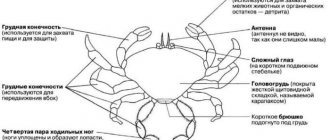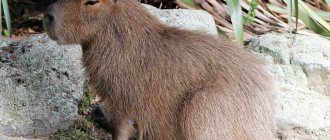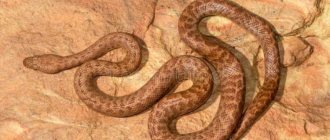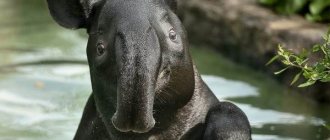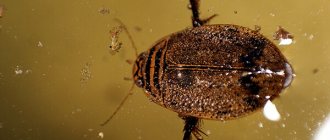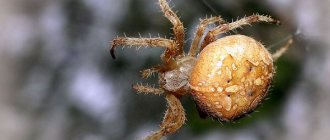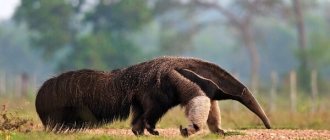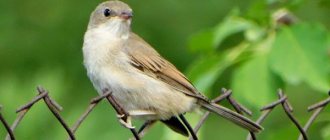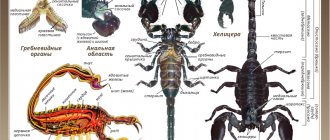- Wild animals
- >>
- Crustaceans
Kamchatka crab is also called King crab due to its impressive size. The benthic marine life is interesting as a biological species; it is also of interest from an economic point of view, since it is an object for commercial fishing. The habitat is wide. The Kamchatka crab is one of the few zoo representatives that has successfully undergone the process of artificial relocation.
Description
It is given third place in the world in terms of fishing. They are distinguished by their agility and strength when circumstances require it.
The Kamchatka crab is the largest representative of crustaceans; it is also called “king crab” due to its impressive size. The life of a marine inhabitant is interesting from the point of view of its biological ability to successfully undergo artificial relocation. It is of great economic importance from a fishing point of view. Hermit crabs, which are related to craboids, are considered direct relatives.
They are distinguished by their large sizes, up to 30 cm wide and up to 1.5 meters long.
Which one tastes better?
Not all crab meat is endowed with high taste characteristics. Kamchatka and snow crab are eaten completely, the flesh is present in the phalanges of the limbs, in the claws and abdomen. Some gourmets drink juice from the head.
To prepare gourmet dishes, it is better to use Kamchatka crab, since opilio is difficult to clean, and there are chitinous threads inside that cannot be removed. It is most convenient to cook crustaceans completely without processing.
If you purchase boiled frozen striguna, you need to put it in the refrigerator for two days, let it defrost naturally. Next, place it in a container of boiling water. After which you can eat the delicacy. To make it tastier, you can pour melted butter on top.
Kamchatka snow crab is ideal for making light summer gazpacho. To prepare this dish, tomatoes, crab meat, peppers, guacamole, and olive oil are used.
freepik
What does it look like
The body structure was formed due to the characteristics of the environment in which the crab lives, nutrition and water temperature.
It consists of shortened five pairs of legs hidden under the shell, with the help of which it moves. With the help of a short pair of limbs it holds its shell. Having evolved, the Kamchatka crab lost its shell and therefore stopped holding it. Now, with the help of the fifth pair of legs, the crab cleans its gills. Four pairs of limbs move in turn; the Kamchatka crab moves very quickly, mainly to the side.
The abdomen is bent inward, shortened, its surface is strewn with small plates and microlegs. With the help of the front antennae and the sensitive cylinders located on them, the crab can touch and smell. Thanks to them, he identifies and finds food.
Sheds especially heavily in the first years of life, when the frame skeleton is replaced. Then this process occurs much less frequently. The average lifespan of a crab is about 15 – 20 years.
Body structure: cephalothorax, located under the shell, and abdomen under it. The eyes are protected by armored ridges. The carapace has many protective spines in the form of needles. The shell serves the crab as a support on which the muscles are attached and help it move. The lateral surfaces of the shell are equipped with gills. The chain of nerve nodes in the animal's body constitutes the nervous system. The head part consists of the stomach, and the back part contains the heart. The claws have their own special tasks. To cut the softest food or transport food to the mouth, the crab uses its left claw. To crush a sea urchin or shellfish, uses the right claw. Thus, the right claw is used in most cases for heavy work, because it is distinguished by its increased size and greatest strength.
Males reach a weight of about 7 kg, the body is from 15 to 25 cm wide. The female is up to 15 cm in size and weighs about 3 – 4 kg.
The shell has a red-brown color, the lateral surface is purple. Consists of gastric, cardiac and two gill zones.
Conditions of detention
The king crab can hardly be called peace-loving. This animal prefers to stay isolated and have a personal territory that it does not want to share with other members of its family. Crabs of this species are recommended to be kept in families, which usually consist of 2-3 females and one male. But if you plan to place several males in one aquarium, then it is important for each of them to provide a territory of at least 30 cm² in order to prevent the manifestation of intraspecific aggression, which often ends in self-harm and death of pets. Also in the aquarium you need to place a large number of various shelters, for example, ceramic pipes, clay shards, caves, grottoes and driftwood, so that each of the pets has a personal shelter and the opportunity to retire.
The leopard crab does not need sushi, so it feels quite comfortable in a regular aquarium. Although, if desired, you can keep your pets in an aquaterrarium with islands of land protruding above the water in the form of driftwood and stones. King crabs tend to escape outside the aquarium. They leave the tank quite quickly, using aquarium equipment for this purpose - cords, hoses, tubes, etc. Taking this into account, it is important to ensure that the aquarium with pets is always covered, be it with glass, mesh or a lid, which will prevent the escape. Unlike other types of crabs, which live on land for months and can freely do without a body of water for a long period, the leopard crab spends most of its life under water, only occasionally getting out onto land. Therefore, the animal’s gills dry out quite quickly, which, of course, can cause the death of the pet.
Molting is one of the most difficult periods in the life of a crab, and how quickly the pet adapts after it largely depends on the conditions of detention, for example, on the quality of food, temperature conditions and even lighting intensity. It is worth noting that crab molting occurs exclusively in water, so it is important that it is not contaminated with waste products. Therefore, care should be taken to filter and aerate the water. The water parameters in the aquarium must correspond to the conditions in the natural habitat: temperature - 25–28 ° C, hardness - about 10 °, pH - approximately 8.0 (a slightly alkaline or neutral environment is needed, but in no case acidic, since it prevents hardening of the chitinous cover, which can have a detrimental effect on the pet).
It is important to ensure that your crab aquarium contains a sufficient number of live aquarium plants of all kinds, as this provides your pets with a more complete nutritious diet. Indeed, in addition to specialized feed and food of animal origin, the king crab also needs plant food, on which the normal growth, development and health of pets depends.
Where does it live?
Mostly distributed in the Pacific Ocean. It settles en masse in the areas of Kamchatka, the Okhotsk and Bering Seas. In America it is found near Bristol Bay and Norton Bay.
In Norway, authorities are drawing attention to the problems of a high population of king crab, which is displacing indigenous inhabitants. Crustaceans cause damage to local fauna.
The crab settles in salt water, where the percentage of its content is 32%, at temperatures ranging from +2 to +7 degrees. Migrating and molting, Kamchatka crabs are found in places where the waters warm up to + 15 - 18.
snow crab opilio
The crustacean creature inhabits the waters of the Bering and Okhotsk Seas, and is also found near Canada on the Arctic side, British Columbia and between Greenland and Portland. Opilio snow crabs live at a depth of 100 meters, and only during oviposition do they swim to the shore, where they give birth to offspring. Most animals of this species can be observed on the surface of the water in the spring. The diameter of the shell of female Chionoecetes opilio reaches 15 cm, males are twice as large. Crabs have no nutritional value, so they are not caught on an industrial scale. Occasionally they get caught in fishermen's nets and are eliminated during the process of sorting the fish.
Since 2022, snow crabs have been protected by the United Nations marine division, and the targeted harvest of the creatures is a criminal offense. Meanwhile, some North Americans are poaching and selling opilio crabs as home aquarium decorations.
What does it eat?
The Kamchatka crab is an omnivore; it prefers to eat a variety of mollusks, plankton, worms, sea urchins, crustaceans, ascidians, small fish, and starfish. Young individuals eat algae and hydroid organisms, worms. The food goal forces animals to make mass movements. With the help of powerful claws, the crustacean kills its prey. In cases of lack of live food, it feeds on carcass remains from fish and various organisms. The animal has a unique feature of adapting to different foods. So, while waiting to molt, the crab looks for food containing a high level of calcium.
Its frame is highly durable and provides a high level of protection, but does not allow the body to grow between shell changes. Therefore, the crab can only grow in a short period of time, which lasts up to 72 hours. At this time, the animal sheds the old frame, and the new one is easily stretchable and does not prevent the crab from growing. After this, the chitin cover gradually strengthens and stiffens due to calcium salts. Then the growth of the Kamchatka crab stops.
Natural enemies of Kamchatka crabs
Photo: King Crab
Adult large representatives of the species have few natural enemies, since the crab has excellent protection - a reliable and durable shell, which in addition is covered with sharp spine-like needles. Only large marine mammals are able to overpower an adult crab.
Smaller individuals have a greater number of enemies, among them:
- predatory fish;
- Pacific cod;
- halibut;
- sea otter;
- bulls;
- octopuses;
- large crabs of different species (intraspecific cannibalism is noted).
During the molting period, the crab becomes absolutely vulnerable and is forced to seek shelter. Man is not one of the natural enemies of the species, however, given uncontrolled commercial fishing and poaching, man has every chance of becoming a species enemy. Therefore, quotas for catching royal arthropods are determined at the state level in order to use population reserves as carefully as possible without undermining their numbers and ability to recover.
Human activities indirectly negatively affect marine life, in particular the Kamchatka crab. Industrial chemical waste, plastic, and petroleum products pollute the vast seas and oceans, negatively affecting all flora and fauna. As a result, entire species are vulnerable to depletion or are on the verge of extinction.
Reproduction
Crabs are characterized by large migration. The chosen route for the premises remains the same from year to year. They migrate due to seasonal changes in water temperature, as well as in search of food and for reproduction. In winter, the crab sinks to the bottom, to a depth of up to 300 m. In spring, it comes to shallow water, where it is warm and there is a lot of food.
The male reaches sexual maturity at the age of 10 years, and the female is considered sexually mature at the age of eight.
It has been established that a female can lay about 300,000 eggs at a time! During the year, females store eggs on their abdominal legs. Temperature fluctuations in water determine the movements of animals. When king crabs move to the shore, the eggs of the females have already passed into the stage of formed larvae. On the shallow water shore, the larvae hatch and can already swim independently. At this time, their mothers continue to move. Very young individuals die before reaching adulthood, because They are the favorite prey of marine life.
Appearance
Like all crabs, opilio has a protective shell. The carapace, that is, a continuous shield covering the soft parts of the body, is characterized by rounded shapes, its length and width are practically the same size. In an adult male it reaches 16 cm. The crab has long, up to 90 cm, flattened legs. They are located on the sides and lower part of the body. Females are approximately twice as modest in size. In total, the strigun has five pairs of limbs, four of which it uses for movement, and the fifth pair, equipped with claws, for obtaining food. There is a ridge above the mouth (called an epistome), which at first glance can be mistaken for teeth.
The shell is covered with tubercles and spines, has a gray-sandy or reddish color, and can turn green before molting. The crab's eyes are green. An adult male in the Sea of Okhotsk can reach 2 kg of weight, in the Bering Sea it is slightly less - up to 1.4 kg.
Peculiarities
In summer, crabs flock en masse to shallow water, and in winter they move deeper into the ocean. They can dive to a depth of 300 m. Thanks to this feature, Kamchatka crabs lead an active life and do not hibernate.
They can move at an average speed of up to 5 km per day. During mass movement along the bottom, the speed remains at the same level.
Kamchatka crab is a slow-growing animal; the key growth factor is water temperature. Thus, in America, crabs living in warm water grow much faster than in Russia, living in the cold waters of Kamchatka.
Lifestyle and habitat
This arthropod leads a very active lifestyle. It constantly migrates, moving over considerable distances. It is worth noting that the path of movement of the Kamchatka crab is the same (it occurs along a specific route), and the approximate speed of movement is 1.5 km/h. Animals can move forward or sideways, and do not know how to hide in the bottom sand.
With the onset of the cold season, the king crab goes to a depth of more than 200 meters (sometimes about 270 m), and when it warms up it returns to shallow water. Molting lasts approximately three days. At this time, the king crab does not show itself; it prefers to hide in rock cracks and various holes. When females molt, males carefully guard them.
When molting, not only the chitinous cover changes. The lining of the stomach, heart, tendons and digestive system are replaced. This leads to the fact that the king crab is almost completely renewed every year and is able to gain new mass.
Eating
Crab claws are an expensive, world-valued and gourmet delicacy. The contents of the right claw have a more tender and nutritious meat composition and are of the greatest value. Kamchatka crab meat contains many essential vitamins, amino acids and minerals such as zinc and iodine. Meat is especially rich in protein and is irreplaceable for the human body. The shell and internal organs are processed as useful fertilizers.
Crab meat is rich in taurine, tocopherol, ascorbic acid, polysaturated fatty acids, and calcium.
Benefits of eating crab meat:
- Strengthening the heart muscle.
- Reducing cholesterol levels, protecting against heart and vascular pathologies.
- Prevention of heart attack and stroke.
- Normalization of hormonal levels.
- Improving the functioning of the thyroid gland.
- Improves vision and functioning of the digestive system.
- Increased metabolism, normalizes the absorption of nutrients.
- Helps with psycho-emotional stress, protects the nervous system from anxiety and depression, improves well-being and mood.
- Has a beneficial effect on skin condition.
- Considered a powerful aphrodosiac, it stimulates libido in both men and women.
How is king crab prepared?
Dishes containing crab meat are widely popular in different countries of the world. When preparing them, it is recommended to take into account some nuances:
- King crab, which is boiled alive, is considered the most delicious. Pre-frozen meat components will not be as tender.
- The meat component of king crab has a very delicate taste. This is why spices can quickly overwhelm it. You can highlight the exquisite aroma using celery, bay leaf, salt, apple cider vinegar and black pepper. Do not overdo it, it is recommended to use a moderate amount.
- The main feature during cooking is the elimination of the possibility of overcooking the Kamchatka crab. If you boil meat for a long period of time, it will definitely become rubbery. Cooking time must be calculated taking into account the weight of the Kamchatka crab. For the first 0.5 kg. 15 minutes is enough, and for the next 0.5 kg. - about ten minutes.
- When removing the crab from the pan, it is recommended to place it back down. This will eliminate the possibility of juice leaking. Once cooked, it will continue to absorb into the meat.
King crab can be eaten alone, in salads or as a topping for stuffing chicken. Meat goes optimally with mushrooms or Italian pasta.
Contraindications and harm
Due to high demand, multiple cases of poaching have been provoked. Due to illegal fishing of crustaceans, the market is teeming with low-quality products. A person can easily become poisoned by low-quality meat containing microbes, pathogenic organisms and various infections. Such a crab may end up on your table if it does not have a quality seal check. A spoiled product can cause severe toxic poisoning, damage hearing and vision, and cause severe disturbances in the functioning of the nervous system.
In order to prevent this, it is very important to treat the place of purchase and not look for a cheap product. To avoid buying contaminated crab, you must purchase meat from stores that have the necessary documentation. When cutting seafood, you should pay attention to the condition of cartilage, spines, and small dense elements. You must be careful not to put the sharp part into your mouth, which can damage the esophagus and gastrointestinal tract.
Composition and calorie content
Crab contains the following vitamins and minerals:
- B vitamins – thiamine, riboflavin, cyanocobalamin, niacin, pyridoxine, folic acid;
- retinol;
- vitamin PP;
- selenium;
- calcium;
- fluorine;
- zinc;
- magnesium;
- phosphorus;
- potassium;
- iron.
This is a low-calorie product, 100 g contains 70 kcal, thanks to which even those people who watch their figure and follow the principles of proper nutrition can include it in their diet. Protein content: 5.9 g, fat – 1 g, carbohydrates – 9 g.
freepik
Interesting Facts
- A distinctive feature of Kamchatka crab is its caviar, light purple in color, reminiscent of grapes.
- In the USSR, a biological campaign was carried out to relocate the Kamchatka crab to the Barents Sea.
- Kamchatka crab is exported to eastern countries, as well as major Russian cities and local markets.
- They are long-lived, as they live up to 20 years. At the same time, the population is quite high, despite the high level of crab catch by fishing vessels.
- Crabs are highly fertile, which stimulates the fishery and allows it to grow from year to year, without loss of population.
- Crab shells can be processed and turned into flour, which is used in the food industry.
- The male can shed his shell in a matter of minutes; this takes him about 10–12 minutes. At such moments, he is especially vulnerable, and can become a tasty morsel for marine life.
- In a female, the change of shell can last about a week. If she has a patron who supports the female with his claws and protects her, then he will soon take the place of the spouse.
- The size of the head is very small in comparison with the rest of the body, and the stomach is located in the head.
"Newbies" among "experienced"
In crab catcher slang, “crab” is an inflexible word
Photo: Sergey Anashkevich, Kommersant
May 18 turned out to be hot in the Rosrybolovstvo building in Moscow, on Rozhdestvensky Boulevard: it was the first day of the auction for the distribution of coastal crab quotas in the south of Primorsky Krai - from the Golden Cape to the Korean border. Not much is caught in this zone, a little more than 10% of the total Russian catch, and yet on this and the next day, Rosrybolovstvo managed to earn significantly more money for the segment than for all other areas.
The last auctions for these quotas took place in 2010 and 2012, and they ended quite quickly: two or three participants came, the one who offered a price that was 2% different from the initial one became the owner of the quotas.
Maltese freshwater crab
One of the largest representatives of decapod crustaceans living in fresh water bodies of Southern Europe, on Malta, Gozo and other islands located in the waters of the Aegean and Ionian Seas. It is characterized by a bright brown-green color and increased aggressiveness. It fearlessly attacks the inhabitants of the reservoir, enters into battle with other crustaceans and can attack a person if it feels threatened.
The Maltese freshwater crab feeds on worms, small mollusks, insects and even frogs. The length of its shell is 12 centimeters, and the weight of the average individual ranges from 130-150 grams. Representatives of this species are often caught by local fishermen and their meat is used as a side dish. The Maltese crab is not an endangered species of crustacean, so it is legal to catch it.
Brown crab (edible, large land)
It is easy to distinguish this type of crab from others - the shape of the shell resembles an oval pie with tucks along the edges. The brown shell in adults has a reddish tint, while in juveniles it has a purple tint. Its length in males reaches 6 cm, in females - 9.8 cm, width in all is approximately 15 cm. There are individuals with larger sizes, but these are isolated cases.
Another distinctive feature is the black color of the tips of the claws. The front claws are the most powerful, the rest are smaller, their surface is covered with hard bristles.
Where he lives, lifestyle
The habitat of large crabs is the North Sea, the North Atlantic, the Mediterranean (data not confirmed). It is found in abundance in rock crevices, between stones on the coast, in the high and low tide zone at a depth of about 100 m.
During the day, the land crab prefers to stay in shelter, and with the onset of darkness it goes out hunting, moving away from its home at great distances - about 50 m. Having seen prey, it can pursue it for a long time or lure it into an ambush, and in search of mollusks it digs deep holes. Its diet includes crustaceans, smaller crabs (green, hairy, porcelain), and a variety of mollusks. The biggest danger for a large crab is the octopus, for which crab meat is a tasty prey.
Reproduction
The breeding season coincides with molting, which takes place in winter. At this time, the female is very vulnerable, and the male, climbing on her, protects her from possible dangers. Mating occurs until the new shell hardens.
Interesting! From 250 thousand to 3 million eggs are fertilized, and the female carries them under the protection of her abdomen for about eight months. The masonry is laid in a depression at the bottom of the sea.
Hatched crabs measure no more than 1 mm and, until the shell grows to 6-7 cm, live in shallow water in the tidal zone, then swim to the depths. Their ability to reproduce offspring occurs when the shell size is 12.7 cm in females and 11 cm in males. Large land crabs live for about 30 years, but there have been individuals that have lived for a whole century.
Their meat is very tasty, so it is in demand all over the world. To regulate populations, technical and legal restrictions on trapping have been created.
How long to cook crab claws
Cooking time is determined by the initial state of the product. Crab claws are available fresh, frozen and boiled-frozen. Therefore, cooking times vary.
- Fresh crab claws and phalanges are boiled for 5-10 minutes after the water boils.
- The whole crab is cooked for 10-15 minutes.
- Frozen crab claws need to be cooked for 10 minutes until tender.
- Boil frozen claws for no more than 5 minutes in boiling water, otherwise the most valuable protein will curdle after repeated boiling.
It is very easy to understand that the claws are cooked - as soon as the crab turns red, it means it is ready. There is no need to overcook it, otherwise the meat will become tough and tasteless. Even already cooked, but then frozen claws must be cooked immediately before eating. Now let's figure out how to do it correctly at home.
Use of the ingredient in cooking
Recipe for ravioli with crab and apples
We will need:
- drinking yogurt (milk-based without flavors and sweeteners) – 150 ml;
- Greek yogurt – 10 ml;
- gelatin – 1 sachet/piece;
- crab meat – 50 g;
- green apples (with a sour taste) – 40 g;
- avocado (choose ripe dark green fruit) – 1 piece;
- cream (any fat content) – 10 ml;
- cilantro (can be replaced with your favorite herbs) – 5 g;
- lemon or lime juice – 3 ml.
Preparation
Prepare gelatin according to the instructions on the package (depending on the specifics of the gelatin). Mix the prepared gelatin with drinking yoghurt, mix the ingredients until you get a homogeneous liquid mass. Prepare a baking sheet: line it with parchment paper and spread the gelatin-yogurt mixture evenly over it. Place the baking sheet in a dry, dark place until the mixture hardens. As soon as the gelatin has set and the yogurt has hardened, cut out circles from the frozen plate. The size of the circle depends on the desired size of the ravioli.
Grind half the avocado in a blender, then pour in the cream. Place the resulting mousse in the refrigerator. Grind the other half of the avocado and mix with chopped crab meat, herbs and apples. Season the apple-meat salad with lemon/lime juice and Greek yogurt.
Place the finished filling inside circles of yogurt and gelatin and form ravioli. Serve with avocado mousse immediately after cooking.
Recipe for California rolls with crab meat
Culinary fact: “California” was invented by the Japanese Ichiro Masita specifically for the American people. But the dish became international and, as fate would have it, became especially popular among the Slavs.
We will need:
- rice (recommended to use nishiki) – 150 g;
- vinegar for making sushi and rolls – 2 tablespoons;
- crab meat – 200 g;
- avocado (choose a fruit with a dense structure) – 100 g;
- Japanese mayonnaise – 40 ml;
- tobiko (caviar) – 100 g;
- nori (dried seaweed) – 5 pcs;
- wasabi and pickled ginger to taste.
Preparation
Rinse the nishiki rice in cold water. Rinse until the water is crystal clear. There is no need to grind the rice or intensively peel each grain of rice. It is important that the grains are not broken or damaged. Rice is the main ingredient of the rolls, so it must be cooked perfectly. Gently stir the rice under running water, then transfer to a sieve, place inside a large saucepan and allow any excess liquid to drain. Rice needs 15-20 minutes to get rid of moisture and dry completely.
Boil the rice in a special rice cooker or follow the instructions on the package. Once the rice is cooked, leave it in the covered container for another 15-20 minutes. During this time, the cereal will cool, become denser and easily take the desired shape. Add the roll vinegar to the warm rice and knead until the liquid is completely absorbed. Lightly dampen the towel, cover the pan with rice and let sit for another 20 minutes.
Boil the crab for 20 minutes in filtered water without salt and spices, then cool. Remove the meat from the second phalanx (this is where it is the most delicious and juicy) and finely chop. Peel the avocado and cut into narrow slices.
Form a roll in the following sequence: nori sheet, rice, avocado, Japanese mayonnaise, crab meat. Roll up and dip tobiko in caviar. Carefully cut off the edges of the roll and cut it into several portions. Place the dish on a plate and serve with ginger, wasabi and soy sauce immediately after cooking.

